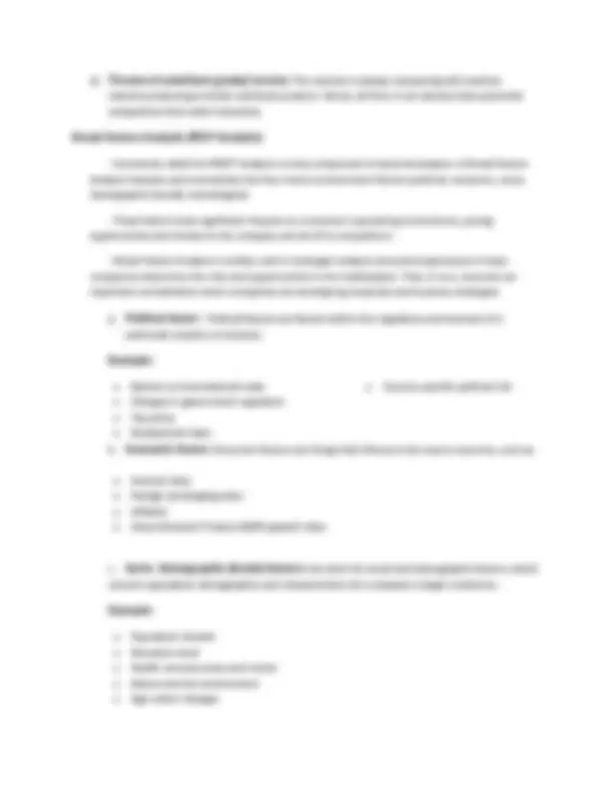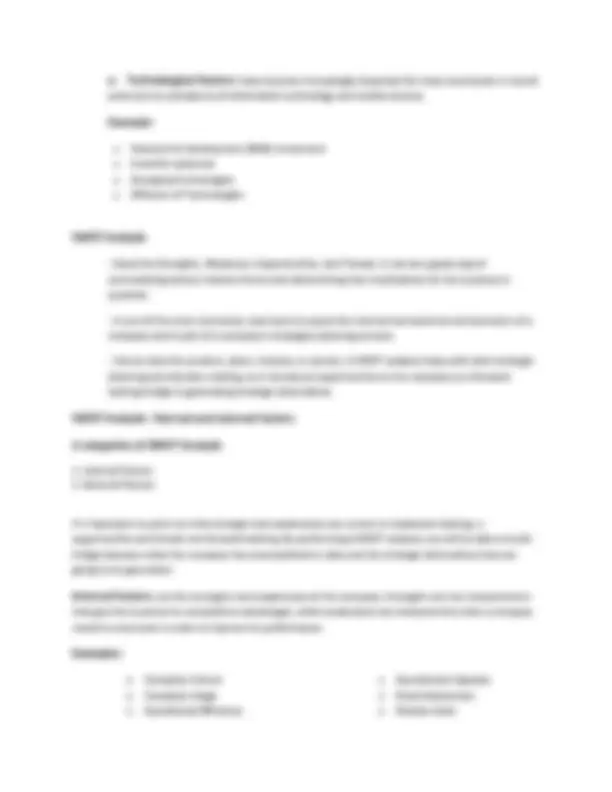





Study with the several resources on Docsity

Earn points by helping other students or get them with a premium plan


Prepare for your exams
Study with the several resources on Docsity

Earn points to download
Earn points by helping other students or get them with a premium plan
Community
Ask the community for help and clear up your study doubts
Discover the best universities in your country according to Docsity users
Free resources
Download our free guides on studying techniques, anxiety management strategies, and thesis advice from Docsity tutors
Definition of market , Four basic types of market, perfect competition, main characteristics of perfect composition, Industry Analysis, types of industry analysis definition and examples
Typology: Lecture notes
1 / 6

This page cannot be seen from the preview
Don't miss anything!




There are 4 basic types of market by traditional economic analysis.
o Perfect Competition o Monopolistic Composition o Oligopoly o Monopoly
similar in nature and, as a result, many substitutes.
o There is perfect knowledge, with no information failure or time lags in the flow information o Given that producers and consumers have perfect knowledge, it is assumed that they make rational decisions to maximize their self-interest. o There are no barriers to entry in or exit out of the market o Firms produce homogeneous, identical, units of output that are not branded. o Each unit of input, like labor, is also homogeneous. o No single firm can influence the market price, or market conditions. o There are very many firms in the market which are too many to measure. As a result of no barriers to entry. o There is no need for government regulation except to make markets more competitive. o There are assumed to be no externalities. o Firms can make abnormal profits in the short run.
supply. A firm’s price will be determined at this point. In the short run, Equilibrium will be affected by demand. In the long run, both demand and supply of a product will affect the equilibrium in perfect competition. A firm will receive only normal profit in the long run at the equilibrium pint. (BEBRUE,
products that are close substitute to each other.
substitute and compete with each other. Stiff competition exists between firms and they share market demand
from each other. Despite this, they remain close substitutes therefore, their prices are similar.
exit an industry. When existing firms make super profits, the new firms enter the industry to produce close substitutes and exit once these super profits are no longer available. Because of this in the market earn normal profits in the long run.
feature in monopolistic competition, so companies spend amount of money.
monopolistic competition. In this market, a small number of firms account for a large proportion of output and employment.
o A relatively small number of firms in the industry that dominate the market o Differentiated products o Mutual interdependence of businesses o Relatively high barriers to entry due to economics of scale o Businesses in the market earn super profits in the long run
market. This is the competitive situation, so it is very hard for a true monopoly to exist. A monopolist has no competitors
Strong barriers to entry, it is usually very difficult to keep others out of market which is capable of earning super profit, such as a monopoly. o Imperfect Knowledge o No advertising. There is no need to defer customers away from a competitor, as there is no close substitute good or service. o One seller
industry producing a similar substitute product. Hence, all firms in an industry have potential competitors from other industries.
: Commonly called the PESST Analysis is a key component of external analysis. A Broad Factors Analysis Assesses and summarizes the four macro-environment factors-political, economic, socio- demographic (social), technological : These factors have significant impacts on a business’s operating environment, posing opportunities and threats to the company and all of its competitors. : Broad Factors Analysis is widely used in strategies analysis and planning because it helps companies determine the risks and opportunities in the marketplace. That, in turn, becomes an important consideration when companies are developing corporate and business strategies
particular industry or business
o Barriers to international trade o Changes in government regulation o Tax policy o Employment laws o Country-specific political risk
o Interest rates o Foreign exchanging rates o inflation o Gross Domestic Product (GDP) growth rates
concern population demographics and characteristics of a company’s target customers.
o Population Growth o Education level o Health consciousness and trends o Nature and the environment o Age cohort changes
years due to prevalence of information technology and mobile devices.
o Research & development (R&D) investment o Scientific advances o Emerging Technologies o Diffusion of Technologies
: Stand for Strengths, Weakness, Opportunities, and Threats. It can be a great way of summarizing various industry forces and determining their implications for the business in question. : Is one of the most commonly used tools to assess the internal and external environments of a company and is part of a company’s strategies planning process. : Can be done for product, place, industry, or person, A SWOT analysis helps with both strategic planning and decision-making, as it introduces opportunities to the company as a forward- looking bridge to generating strategic alternatives
that give the business its competitive advantages, while weaknesses are characteristics that a company needs to overcome in order to improve its performance.
o Company Culture o Company Image o Operational Efficiency o Operational Capacity o Brand Awareness o Market share